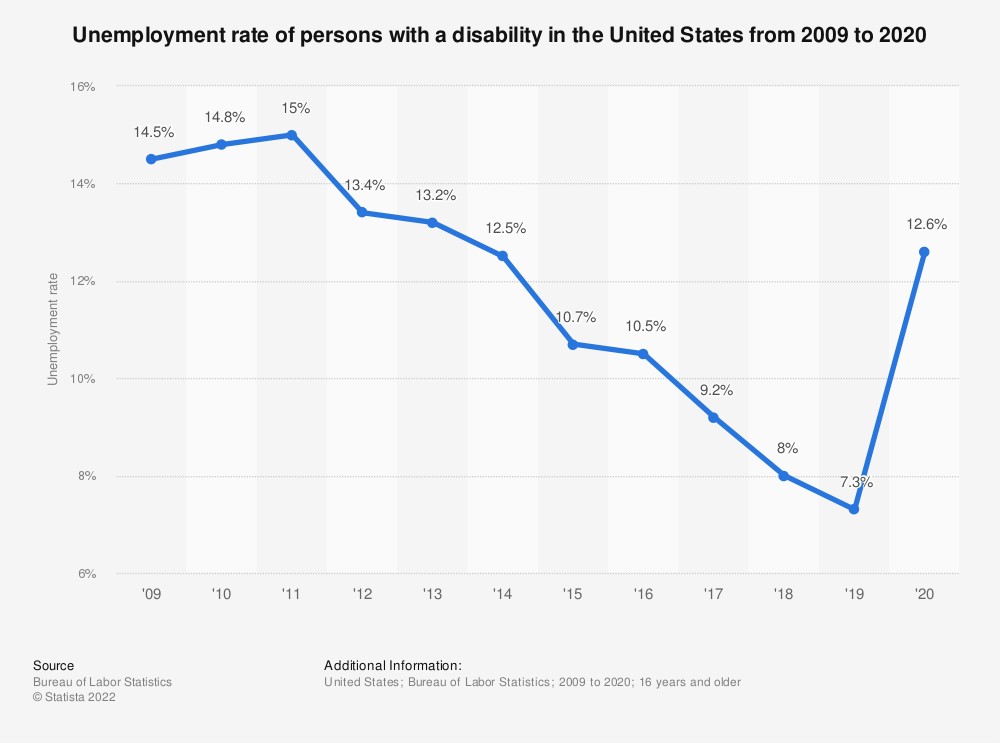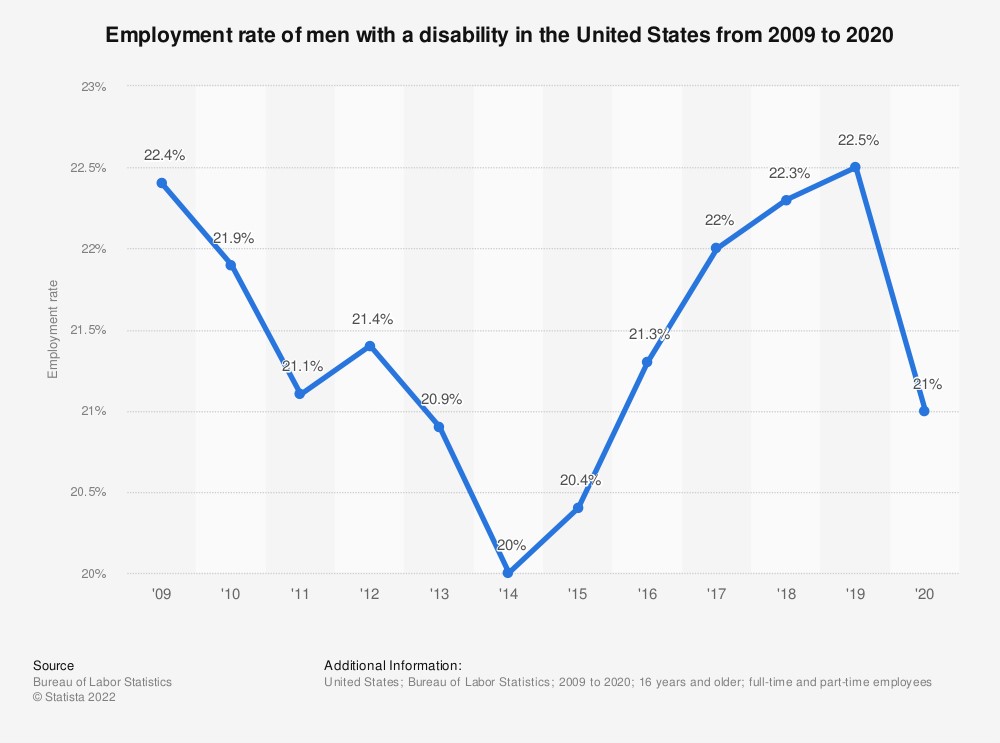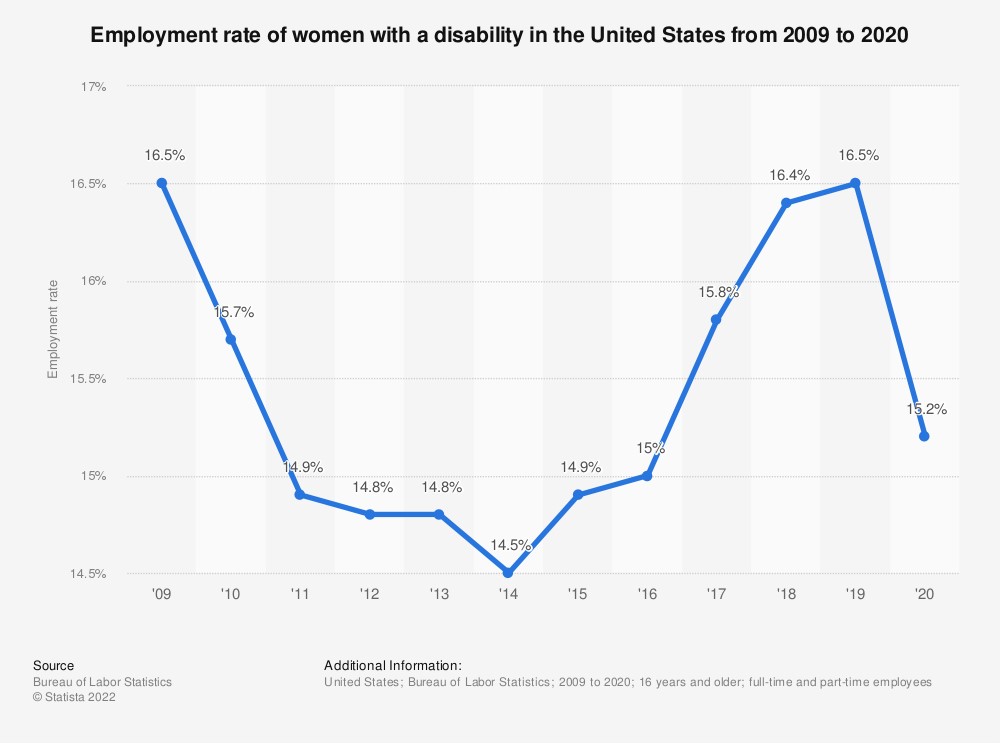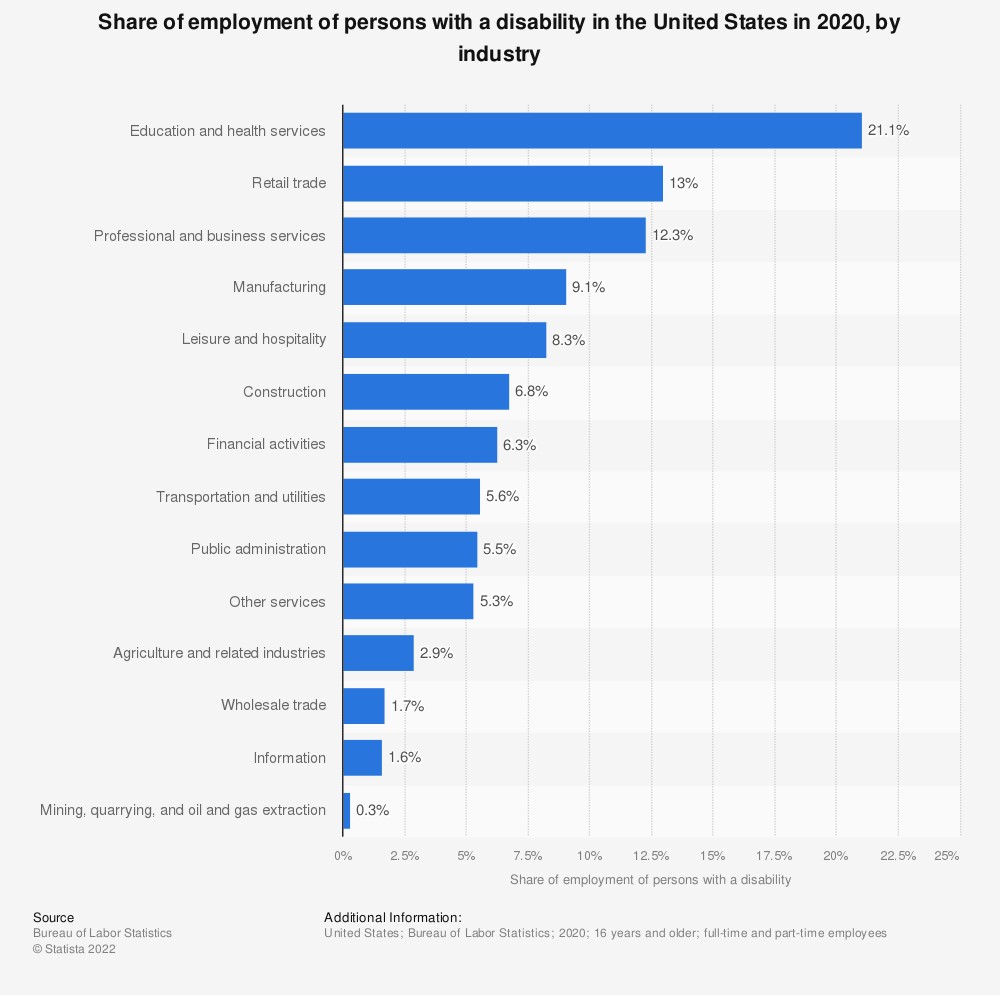Disability Discrimination in the Workplace – Statistics – Update 2024
Disability discrimination in the workplace can occur when an employer or other organizations covered by law, such as the American disabilities law amended, or rehabilitation law in its amended form, treat those who meet the criteria which include applicants or employees who aren’t profitable due to the fact that they are deficient.
Workplace and employment discrimination based on disability occurs when an employer is shut down or when other companies are able to discriminate against applicants or employees with less favorability because they have a past history of disabilities (such as a significant depression-related episode from earlier) or because they are considered to be suffering from mental or physical disorder) it’s not permanent (survive or be predicted to last for six months at most) and is not a major issue (even in the event that he doesn’t show a decline in value compared to the one mentioned above.).
The law requires employers to provide reasonable accommodations for employees or applicants who have disabilities in the event that doing so would result in significant costs or difficulties on the part of the business (“Inexpensive Problems”).
It is not accepted legally to harass employees or applicants due to disabilities. or has had disabilities in the past.
Harassment could be the result of an employee of the victim or supervisors from other areas and coworkers or even someone who isn’t an employer-employee, for example, customers or clients.
Before we look at the various types of discrimination against disabled people at work, we should be aware of the standard of employment for those who are disabled and the rate of unemployment in our US population.
In October 2021, among workers ages 16-64, the 5,186,000 workers with disabilities represented 3.6 percent of the total 144,505,000 workers in the U.S.
In this statistic roundup, you’ll learn:
–PERSONS WITH A DISABILITY EMPLOYMENT RATE.
–PERSONS WITH A DISABILITY UNEMPLOYMENT RATE.
–DISABILITY DISCRIMINATION BY GENDER.
–DISABILITY DISCRIMINATION BY EDUCATION.
–DISABILITY DISCRIMINATION BY RACE.
–DISABILITY DISCRIMINATION BY INDUSTRY.
Is your company offering jobs for people with disabilities? As an employer, you can publish your job offers on MyDisabilityJobs and reach thousands of qualified candidates.
Disability & Employment Rate
The ratio of work population is that the percentage of population used for persons with disabilities increased 1.2 points percentage from the previous year to 19.1 percent in 2021.
- This was nearly the same ratio as in 2019 (19.3 percent), before the impact of the pandemic.
- The ratio for those without a disability, at 63.7 percent in 2021, increased by 1.9 percentage points over the year but was 2.6 percentage points lower than in 2019.
- The lower percentage of persons who have disabilities reflects an aspect of the older age profiles of those with disabilities; older workers are less likely to find employment, regardless of disability status.
However, in all age groups, people with disabilities are much less likely to be employed than those who have no disability.
- In 2021, the working population ratio for people with disabilities aged 16 to 64 years increased to 31.4 percent.
- While the ratio for persons without a disability in the same age group increased to 72.5 percent.
- Ratio for people aged 65 years and over with A disability (6.9 percent) and without disability (22.3 percent) shows a little or no change from the previous year.

Source: U.S. Department of Labor
Disability & Unemployment Rate
The unemployment rate for persons with disabilities, by 10.1 percent in 2021, declined with 2.5 points percentage from the previous year but is still higher than in 2019 (7.3percent).
- The jobless rate for those with a disability was about twice as high as the rate for those without a disability. (Unemployed persons are those who did not have a job, were available for work, and were actively looking for a job in the 4 weeks preceding the survey.)
- The unemployment rate for persons without a disability decreased by 2.8 percentage points to 5.1 percent in 2021.

Source: U.S. Department of Labor
Disability & Employment Discrimination by Gender
In the United States, the employment rate of men with a disability was 21 percent in 2020.
- This was a decrease from the previous year, when 22.5 percent of men with a disability were employed.
- The decrease in employment among persons with disabilities may be due to the COVID-19 pandemic that has affected everyone’s employment.

- At 10.1 percent in 2021, the unemployment rate for men with a disability was the same as for women with a disability.
- The unemployment rates for both men and women with a disability decreased from 2020 to 2021; however, both remain above their 2019 rates.

Source: Statista
Disability Employment Discrimination and Education
In 2020, the employment rate of persons with a disability in the labor force who had a Bachelor’s degree or higher was 25.7 percent in the United States.
However, only 7.6 percent of people that had less than a high school diploma and had a disability were employed in 2020.
- Persons with a disability were less likely to have completed a bachelor’s degree and higher than those with no disability.
- Among both groups, those who had attained higher levels of education were more likely to be employed than those who had attained less education.
- Across all levels of education in 2021, persons with a disability were much less likely to be employed than were their counterparts with no disability. (Educational attainment data are presented for those age 25 and over.)

Source: Statista
Disability Employment Discrimination by Race
Among persons with a disability, the employment rates for Blacks (13.9 percent) and Hispanics (19.3 percent) were higher than the rates for Whites (18.4 percent) and Asians (15.8 percent) in 2020.
- Among persons with a disability, the jobless rates for Blacks (15.1 percent) and Hispanics (13.3 percent) were higher than the rates for Whites (9.3 percent) and Asians (8.5 percent) in 2021.
- The rates for Whites, Asians, and Hispanics decreased from 2020 to 2021, while the rate for Blacks showed little change.

Source: Statista
Disability and Employment Discrimination by Industry
There are the employment rate for disabled in 2020 by industry (all employed persons with a disability in the United States):
| Industry | Employment Rate for Disabled in 2020 |
|---|---|
| Education and Health Services | 21.1% |
| Retail Trade | 13% |
| Professional and Business Services | 12.3% |
| Manufacturing | 9.1% |
| Leisure and Hospitality | 8.3% |
| Construction | 6.8% |
| Financial Activities | 6.3% |
| Transportation and Utilities | 5.6% |
| Public Administration | 5.5% |
| Agriculture | 2.9% |
| Wholesale Trade | 1.7% |
| Information | 1.6% |
| Other Services | 5.3% |
| Mining, Quarrying, and Oil and Gas Extraction | 0.3% |

Source: Statista
Is your company offering jobs for people with disabilities? As an employer, you can publish your job offers on MyDisabilityJobs and reach thousands of qualified candidates.
Conclusion
The employment-to-population ratio for working-age people with disabilities increased from 29.2 percent in October 2020 to 33.2 percent in October 2021 (up 13.7 percent or 4 percentage points).
- For working-age people without disabilities, the employment-to-population ratio also increased from 71.3 percent in October 2020 to 73.5 percent in October 2021 (up 3.1 percent or 2.2 percentage points).
- The participation rate in the labor force for people who are disabled and working has increased by 33.3 percent as of the end of November 2020, to 36.8 percent by October 2021 (up 10.5 percent or 3.5 percentage points).
- For disabled people who are working and no disabilities, the participation rate has also rose to 76.2 percentage in the month of October, 2020, to 76.6 percent by October 2021 (up 0.5 percent or 0.4 percentage points).
In October 2021, among workers ages 16-64, the 5,186,000 workers with disabilities represented 3.6 percent of the total 144,505,000 workers in the U.S.
Persons who are neither employed nor unemployed are not in the labor force.
- A large proportion of persons with a disability–about 8 in 10–were not in the labor force in 2021, compared with about 3 in 10 of those with no disability.
In part, this reflects the older age profile of persons with a disability; persons age 65 and over are much less likely to participate in the labor force than younger age groups.
- Across all age groups, however, persons with a disability were more likely to be out of the labor force than those with no disability.
For persons with and without a disability, the vast majority of those not in the labor force reported that they do not want a job.
- In 2021, 3 percent of those with a disability and 7 percent of those without a disability wanted a job. Among those who do want a job, a subset are classified as marginally attached to the labor force.
The respondents wanted and were willing to work, and had searched for a job within the last 12 months. They were not considered unemployed as they did not search for employment during the 4 weeks prior to the study. (Persons who are not fully connected to the labour force are people who are disengaged.)
less than 1 percent of disabled people and approximately 2 percent of those with no disabilities were marginally connected to the workforce in 2021.
In the process of gathering statistical data to create a clear picture of the current situation for disabled individuals in the labor market is particularly challenging. This is due to the fact that many Member States do not carry regular or consistent studies on the job situation of disabled persons.
Source: Phys.org
FAQ
In 2021, the working population ratio for people with disabilities aged 16 to 64 years was 31.4%.
Related articles:
Workplace Bullying Statistics Research & Facts
Statistics on Employees Burnout in the Workplace
Statistics of Diversity in the Workplace
Intellectual Disability Employment Statistics
Mental Health and Employment Statistics
Autism and Employment Statistics
Disability and Depression Statistics


leave your comment